Learn the Lingo of Kitchen Cabinet Door Styles
http://decor-ideas.org 03/06/2014 07:23 Decor Ideas
Cabinets make a big style statement in kitchens, bathrooms and living rooms, and the doors, drawer fronts and side panels come in a wide range of options and prices. To learn about the basic types and why some cost more than others, I visited Canyon Creek Cabinet’s large production facility in Monroe, Washington, and O.B. Williams’ smaller custom shop in Seattle.
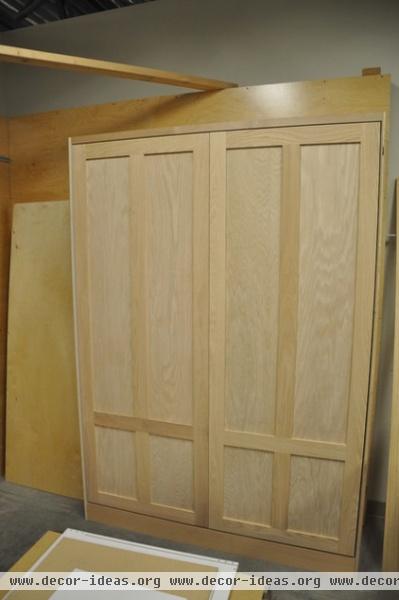
3 Types of Cabinet Doors
Doors and drawers come in three types: inset, partial overlay and full overlay, also known as Euro style. Each has a slightly different look and function.
Inset cabinet doors. Most cabinets built in place in kitchens in the early 1900s have inset doors. Small hinges are mounted right on the face frame (the visible frame around the cabinet opening) or just inside it; the hinges are often visible when the door is shut.
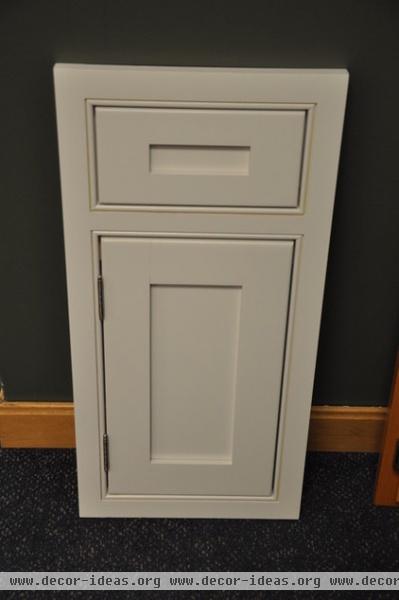
The face of an inset cabinet door or drawer is in the same plane as the leading edge of the cabinet box. This very traditional look from the early 1900s can be replicated today but tends to be more expensive than other options. The inset also reduces space inside the cabinet, which means smaller drawers and hardware that requires extra blocking in the box.
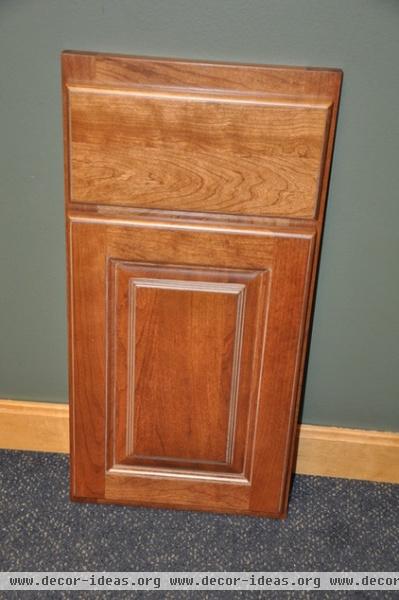
Partial overlay cabinet doors. A modern upgrade from inset, partial overlay doors and drawers are mounted over the face of the box, covering the opening completely and partially covering the finished face frame. This construction also makes it possible to install more functional hardware, though the face frame still reduces the amount of accessible space inside the cabinet.
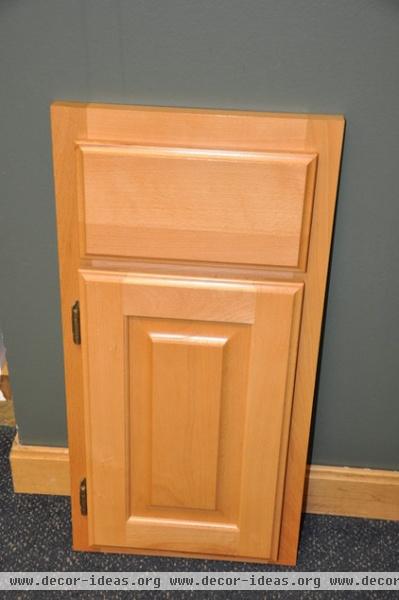
The aesthetic downside is that there can be wide expanses of visible face frame, making it look like the doors and drawers are dotting the surface, rather than defining it. The partial overlay shown here includes visible hinges.
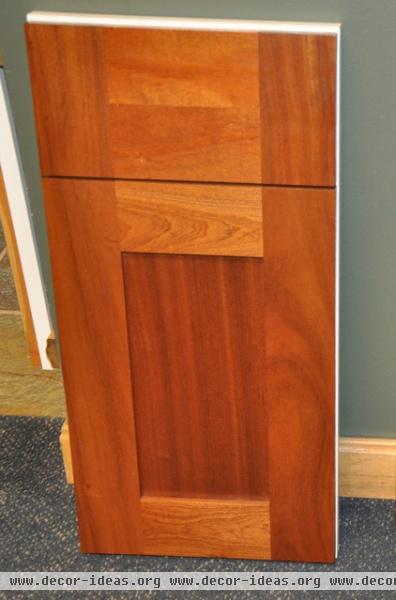
Full overlay or Euro-style cabinet doors. The most modern iteration is a full overlay, meaning that the door or drawer face completely overlays the box — it covers not just the opening but the entire face of the box. There is no visible face frame with these cabinets when the doors are closed, which means hinges are utilized that allow the doors to open without hitting adjacent doors and drawers.
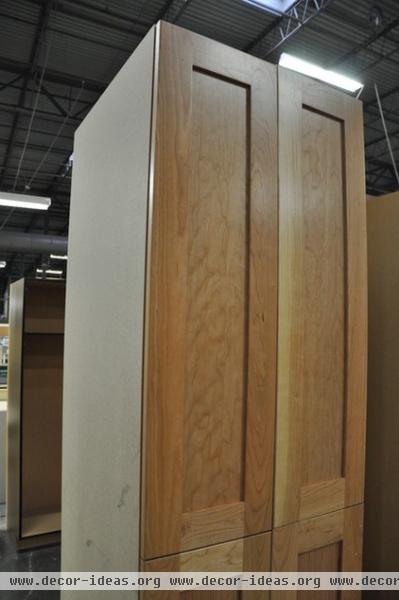
The advantage of the overlay door style is that there are very small gaps between doors and drawers, creating a consistent and continuous appearance. It also allows the fullest possible access to the box. That means bigger drawers, smaller drawer guides and more space for storage. The downside is that extra care must be taken to make sure the doors and drawers do not collide — particularly in corners and with drawer pulls or knobs installed. Every fraction of an inch is important with these, so they require a high level of knowledge on the part of the cabinetmaker and installer.
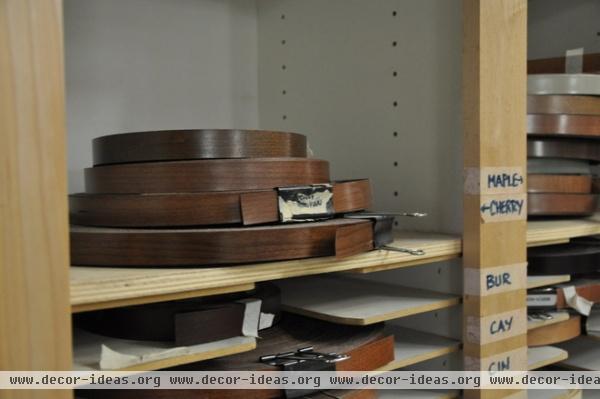
Details for All Types
Edge banding. No matter the construction, when you open your doors and drawers, you will see an edge band. That is the material used to cover the cut ends of the plywood on boxes, drawers and shelving.
Edge banding can be thin PVC plastic, melamine or real wood in a variety of thicknesses. The banding comes in long rolls and is adhered to the edges of the plywood with an edge-banding machine.
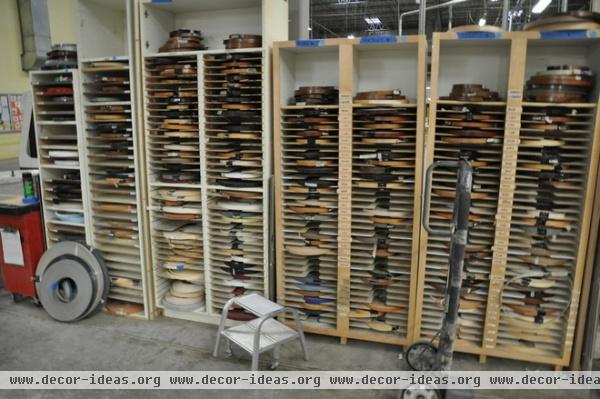
Edge banding usually matches the wood species and stain or color of the other cabinet parts. This means the cabinetmaker must keep a large stock of options on hand, spooled up and ready to go.
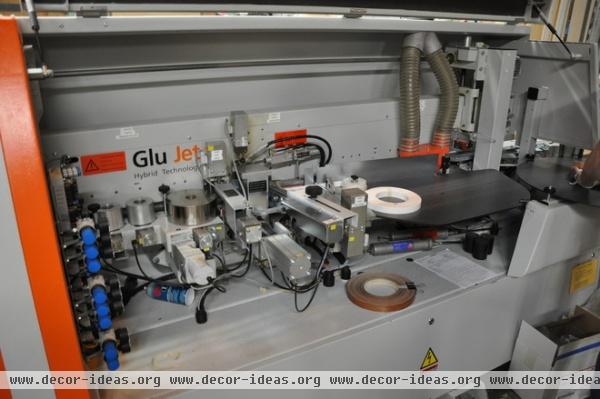
This large edge-banding machine is at Canyon Creek’s plant. A single operator is responsible for all of the edge banding, though each piece is edge banded to custom specifications.
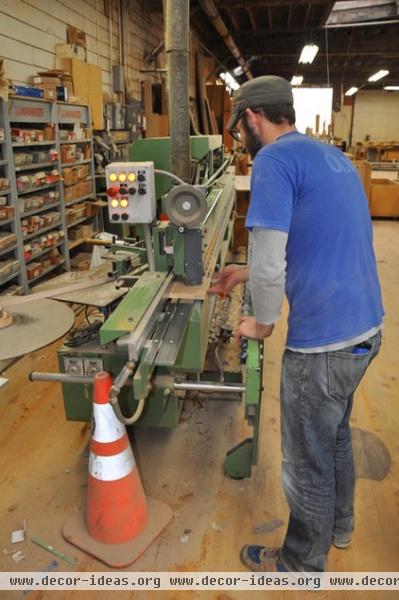
Each of the cabinetmakers at O.B. Williams uses this smaller edge bander. After the edge banding is attached, it is sanded to achieve a finished edge. The thicker the edge-band material, the better it will hold up over time — but greater thickness comes at a higher price.
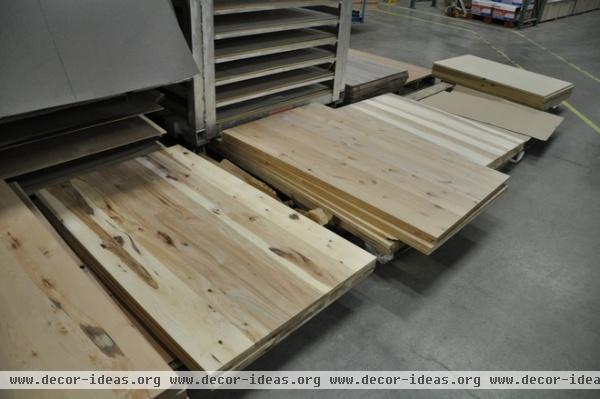
Cabinet face construction. Cabinet faces are made from solid wood, an engineered and veneered sheet material like plywood, MDF or particleboard, or a combination of these.
These wood slabs at Canyon Creek will be cut into solid wood door faces.
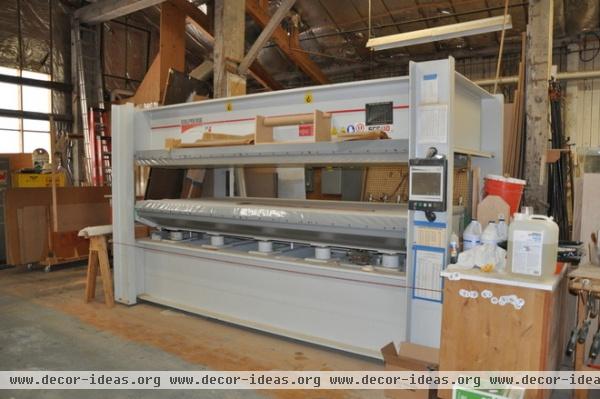
Faces that are flat are usually sheet material overlaid with a premium wood veneer, a manufactured veneer like Thermofoil or a veneer surface that’s easily painted, like maple, poplar or MDF.
Veneer is a thin material glued under pressure onto a thicker substrate, so that it becomes the finished surface for that material. “Laying up” the veneer is done by machines like the one shown here at O.B. Williams; the glue is applied to the substrate, then the veneer is laid over the top and compressed for an even application.
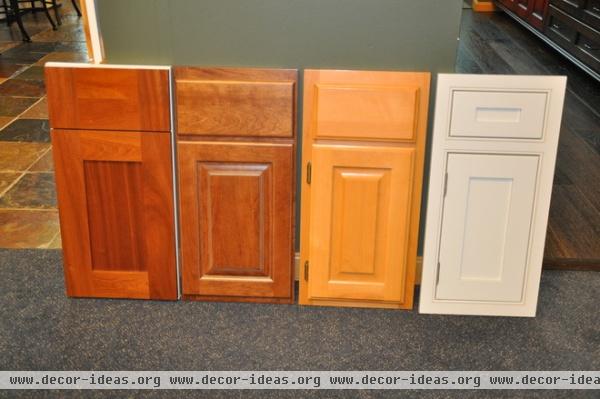
Faces aren’t all flat, though. Those that have a raised panel are generally made from milled wood that is pieced together with square or mitered (45-degree-angle) corners and a panel in the middle to create a finished face.
Faces that have more linear details, like Shaker-style ones, are often assembled with square cuts and also have panels in the middle.
The important thing to understand about doors and drawers is the limits of their stability and the dimensions of the wood. You can’t have a solid wood door manufactured from a single wood species unless it has been pieced together.
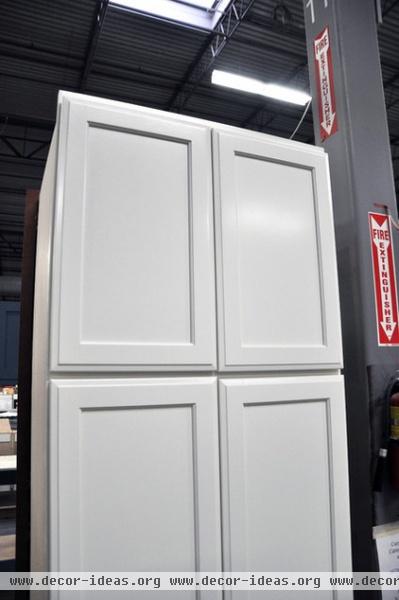
It’s also very difficult to build a large door out of solid wood and not have it warp over time. Cabinetmakers will provide you with size limits based on the materials used. Often the solution is using two smaller doors instead of one large one, to make sure they’re stable and won’t warp.
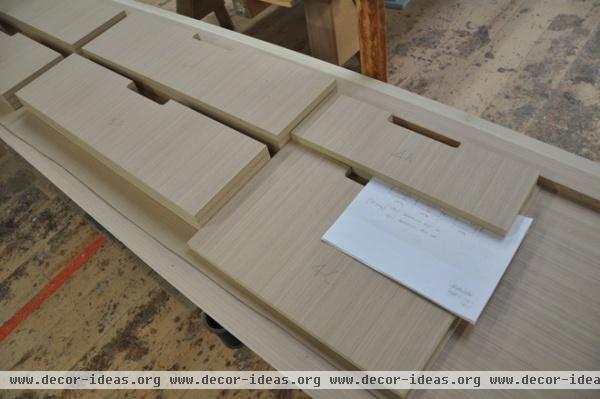
At O.B. Williams these cut cabinet door and drawer faces are awaiting finishing and final installation.
Next: Selecting wood species and paint finishes, and an answer to the question, “Aren’t all cherry cabinets the same?”
More: What to know about cabinet box construction before you shop
Related Articles Recommended












